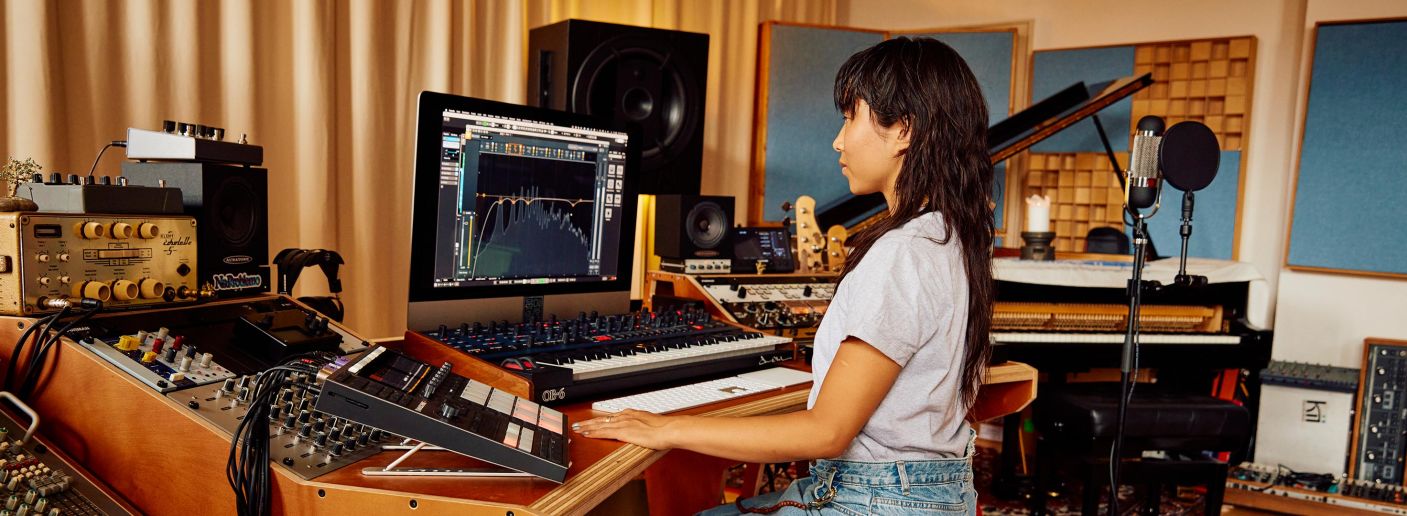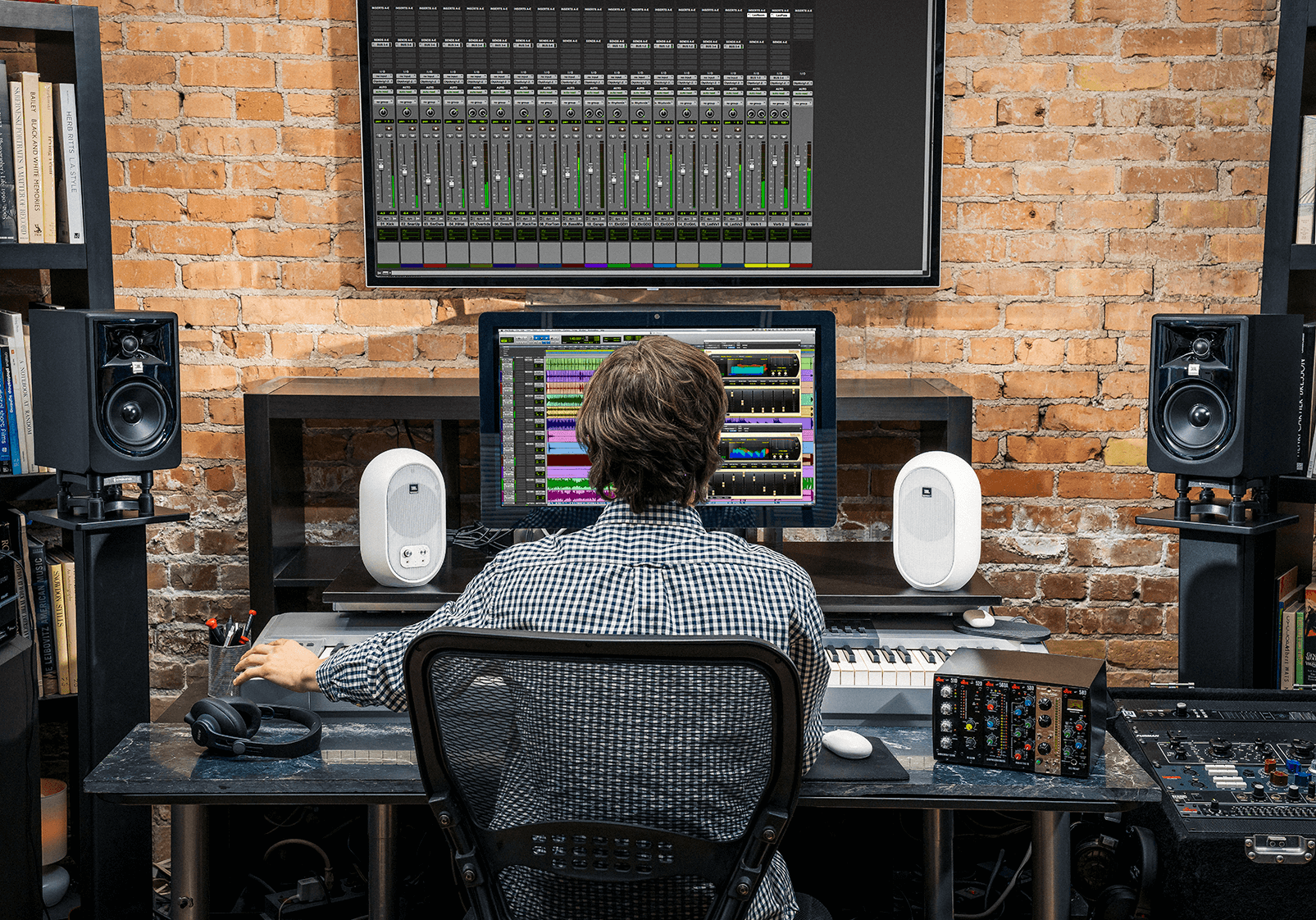To mix music properly, focus on levels, panning, EQ, effects, and dynamics for a balanced sound. Use reference tracks for guidance.
When it comes to mixing music, achieving a polished and professional sound requires attention to detail and a good understanding of both the technical and creative aspects of the process. Mixing involves blending the individual elements of a track – such as vocals, instruments, and effects – to create a cohesive and balanced sound.
By using tools like volume levels, stereo panning, equalization (EQ), effects processing, and dynamic processing, you can enhance the clarity, depth, and overall quality of the mix. Utilizing reference tracks can also help you compare your mix to professionally mixed songs and make informed decisions to improve your own work. In this guide, we will explore some essential tips and techniques to help you mix music properly and elevate your sound to the next level.
Setting The Stage
Setting the stage is crucial for achieving a professional sound in music mixing. This phase lays the foundation for a seamless and cohesive final product that captures the essence of the music.
Professional Sound Defined
To achieve a professional sound in music mixing is to create a polished and balanced audio experience that captivates the listener. This entails attention to detail in every element of the mix.
The Importance Of Proper Mixing
- Proper mixing enhances the clarity and impact of each instrument and vocal track.
- It ensures that the various elements of the song are well-balanced and complement each other.
- Effective mixing can bring out the emotions and dynamics of the music, engaging the audience on a deeper level.
A well-mixed track can make a significant difference in how the audience perceives and connects with the music, highlighting the importance of proper mixing techniques.

Credit: www.izotope.com
Essential Tools
Essential Tools: To properly mix music, you need the right tools. Understanding how to use EQ and dynamics, as well as knowing how to effectively utilize effects and processing, are crucial.
Understanding Eq And Dynamics:
EQ allows you to adjust the frequency balance of different tracks. Dynamics control the overall volume and manage the sound’s intensity.
Utilizing Effects And Processing:
Effects such as reverb and delay add depth to your mix. Processing involves compression, which smoothens out the dynamics of your tracks.
Crafting The Mix
Learn how to properly mix music with the “Crafting the Mix” guide, covering essential techniques for achieving a professional sound. From balancing levels to utilizing effects, this resource provides valuable insights and tips for creating a polished, cohesive mix. Whether you’re a beginner or seasoned producer, this guide offers actionable advice to elevate your music production skills.
Crafting the Mix Balancing Levels and Panning When crafting a mix, ensuring that balancing levels and panning are done accurately is crucial. Balancing levels refers to adjusting the volume of each track to make sure they blend well together, while panning controls the placement of the sound within the stereo field. Creating Depth and Space Another important aspect of crafting a mix is creating depth and space. Using techniques such as reverb, delay, and EQ, you can give your mix a sense of depth and space, helping each element find its place within the mix. Balancing Levels and Panning First, focus on balancing the levels of individual tracks. Use the faders on your mixing console or within your digital audio workstation to adjust the volumes. Pay attention to how each track fits into the overall mix, aiming for clarity and balance. When it comes to panning, experiment with placing different instruments and sounds in the stereo field. This can create a sense of space and separation, making the mix more dynamic and engaging for the listener. Creating Depth and Space To create depth and space, start by using reverb and delay effects. These can give the impression of distance, with reverb adding a sense of room size and delay creating echoes and reflections. By adjusting the parameters of these effects, you can tailor the spatial qualities of each track. Additionally, utilize EQ to carve out space for each instrument in the frequency spectrum. By removing unwanted frequencies and emphasizing the desirable ones, you can give each track its own sonic space, contributing to a more cohesive and spacious mix. Crafting a Mix requires attention to detail, as each element plays a crucial role in the overall sound. By mastering the art of balancing levels and panning and creating depth and space, you can elevate your mixes to a professional standard.

Credit: lexiconpro.com
Refining The Sound
Once you have your basic mix done, it’s time to refine the sound and make it shine. This phase is crucial in ensuring your music sounds professional and polished. In this section, we’ll focus on two essential aspects of refining the sound: the listening environment and reference tracks.
Listening Environment
Before diving into the specifics of refining your mix, it’s important to set up an optimal listening environment. The way you hear the music can greatly impact how you perceive and make adjustments to it. Here are some key factors to consider:
- Choose a quiet and acoustically balanced room for your studio setup. Avoid rooms with excessive reverb, as this can distort your perception of the mix.
- Position your speakers or headphones at the correct height and distance to create an accurate stereo image.
- Use acoustic treatment to minimize reflections and echoes in your room. Absorbing panels and bass traps can greatly improve the clarity of your listening environment.
By optimizing your listening environment, you’ll be able to make more precise decisions when refining your mix.
Reference Tracks
One effective way to refine your mix is by using reference tracks. These are professionally mixed and mastered songs in a similar genre to yours that you can compare your mix to. Here’s how you can use reference tracks effectively:
- Select a few high-quality reference tracks that embody the sound and style you want to achieve.
- Import these tracks into your project and play them alongside your mix. Take note of the differences in levels, tonal balance, and overall clarity.
- Listen carefully to how the instruments and vocals are placed in the stereo field. Pay attention to the depth and width of the mix.
- Make adjustments to your mix based on what you hear in the reference tracks. Aim to match the overall tonal balance and level of detail.
Using reference tracks as a guide helps you to identify any areas that need improvement in your mix. It provides a benchmark for the quality and professional sound you’re aiming to achieve.
By focusing on creating an optimal listening environment and using reference tracks effectively, you can refine your mix to a whole new level of quality and ensure it stands out in the competitive world of music production.
Mastering The Mix
Mastering is the final step in the music production process. It is the stage where the individual tracks of a song are brought together and polished to sound cohesive, balanced, and ready for distribution. One crucial aspect of mastering is mixing, which involves adjusting the levels, dynamics, and frequencies of each track to ensure they work together harmoniously.
Before you start mastering your mix, it’s important to prepare it adequately for distribution. This involves several key steps:
- Organize your tracks: Make sure all the audio files are properly labeled and organized in your project. This will save you time and confusion when you start mastering.
- Check for silence: Remove any unwanted silence at the beginning or end of each track. This will make the transitions between songs or sections smoother.
- Normalize the volumes: Adjust the overall volume of each track to ensure they have a consistent loudness level. This will prevent any sudden jumps or drops in volume when the songs are played back-to-back.
While it’s possible to master your own mixes, getting professional feedback can significantly improve the final outcome. Consider the following:
- Work with an audio engineer: Collaborating with an experienced audio engineer or mastering professional can provide valuable insights and help you achieve a polished and industry-standard sound.
- Use reference tracks: Listen to well-mixed and mastered songs similar to your music. Analyze the dynamics, tonal balance, and stereo imaging to get an idea of what your mix should strive for.
- Ask for feedback: Share your mix with trusted individuals, such as fellow musicians or producers, and ask for their feedback. They may identify areas that need improvement or offer suggestions for enhancing the overall sound quality.

Credit: www.amazon.com
Frequently Asked Questions On How To Mix Music Properly
How Do I Mix Music Properly?
To mix music properly, start by organizing your tracks, adjusting levels, and panning instruments. Use EQ to balance frequencies, apply compression to control dynamics, and add reverb or delay for depth. Finally, check your mix in different listening environments and make necessary adjustments.
What Tools Do I Need For Proper Music Mixing?
To mix music properly, you’ll need a Digital Audio Workstation (DAW) like Pro Tools, Ableton Live, or Logic Pro. DAWs provide essential tools like EQ, compression, and reverb. Additionally, having high-quality studio monitors, headphones, and an audio interface will help you achieve accurate and detailed mixes.
How Can I Achieve Clarity In My Mix?
To achieve clarity in your mix, make sure each instrument has its own space in the frequency spectrum. Use EQ to cut unnecessary frequencies, and consider using sidechain compression to create space for the most important elements. Additionally, pay attention to stereo width and ensure each instrument is well-balanced and distinct.
Why Is Gain Staging Important In Music Mixing?
Gain staging is important in music mixing to ensure optimal signal flow and prevent distortion. By carefully setting levels throughout your mix, from individual tracks to the master bus, you maintain a healthy signal-to-noise ratio and avoid clipping. Proper gain staging allows you to retain clarity and dynamics in your mix.
Conclusion
To wrap up, mastering the art of mixing music properly takes time and dedication. By following the tips and techniques mentioned in this blog post, you can elevate the quality of your music productions. Remember, practice makes perfect, so continue to hone your skills and trust your ears.
With patience and experience, you can achieve professional-sounding mixes that resonate with your audience. Happy mixing!